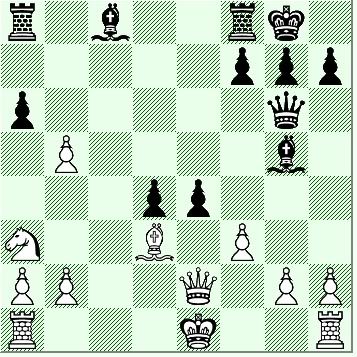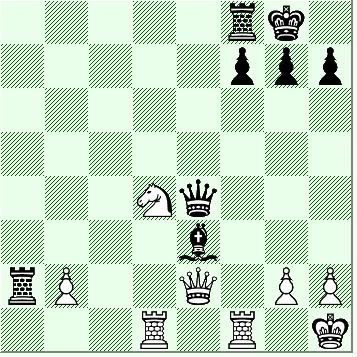My mother travelled in [sic] me to Thessaloniki in 1984. This was the first time I was to play in the Indian team. When we saw that I would share the hall with other great legends, my mother was extremely proud that I was to play there. I casually mentioned to her that I would never even dream that my games could be published in the Informant. She chased Milutin and persevered until he agreed to have a game of that Indian boy who played fast. If I am not mistaken they carried a game of mine from Thessaloniki. The first game I did for them was with Deen Hergott.Starting through this game immediately reminded me of a short draw I played on the Internet Chess Club in 1999. The opening moves:
1.e4 c5 2.Nf3 Nc6 3.d4 cxd4 4.Nxd4 e5 (the Kalashnikov, which I played with some frequency in the late 1990s) 5.Nb5 d6 6.N1c3 a6 7.Na3 b5 8.Nd5 Nf6 9.Bg5 Qa5+ 10.Bd2 Qd8
My online opponent opted to repeat the position with 11.Bg5, and we drew after my move 13. Anand was less accommodating towards Hergott.
11.Nxf6 Qxf6 12.c4 Qg6 13.f3 Be7

14.cxb5 Nd4 the novelty. 14...Bh4+ appears in Chess Informant 22/408
15.Be3 O-O 16.Bxd4 exd4 17.Qd2 d5 18.Bd3 Bg5
Anand's annotations note the importance of playing 17...d5 before this move. 17...Bg5 leads to 18.Qxd4 with a strong advantage for White.
19.Qe2 dxe4

Anand's annotations reveal enthusiasm for Chess Informant's system of symbols. If 20.Qxe4 Qxe4 21.Bxe4 Rb8 and Black has compensation for the pawn due to the bishop pair.
20.Bxe4 Bf5 21.O-O
Anand gives explanation marks to Black's move and his own here. On the other hand, the variation beginning with 21.Bxa8 leads to a decisive advantage for Black as his bishops control msot of White's first rank from e3 and d3.
21...Be3+ 22.Kh1 Bxe4 23.fxe4 Qxe4 24.Rad1 axb5 25.Nxb5 Rxa2 26.Nxd4

The critical position. Here, according to Anand, 26...Ra4 leads to equality, but the move played is an error.
26...Qe5? 27.Nf5 Bf4 28.Qg4 g5 (box) 29.Rde1 h5 30.Nh6+ Kg7 31.Qxh5

31...Qxb2?
The final error. 31...Qf6 offers more stubborn defense.
32.Nf5+ Kg8 33.Qg4 Qd2 34.Rd1 Qb4 35.Rd4 Qb8 36.h3 Kh7 37.Rdxf4 gxf4 38.Qg7#













No comments:
Post a Comment